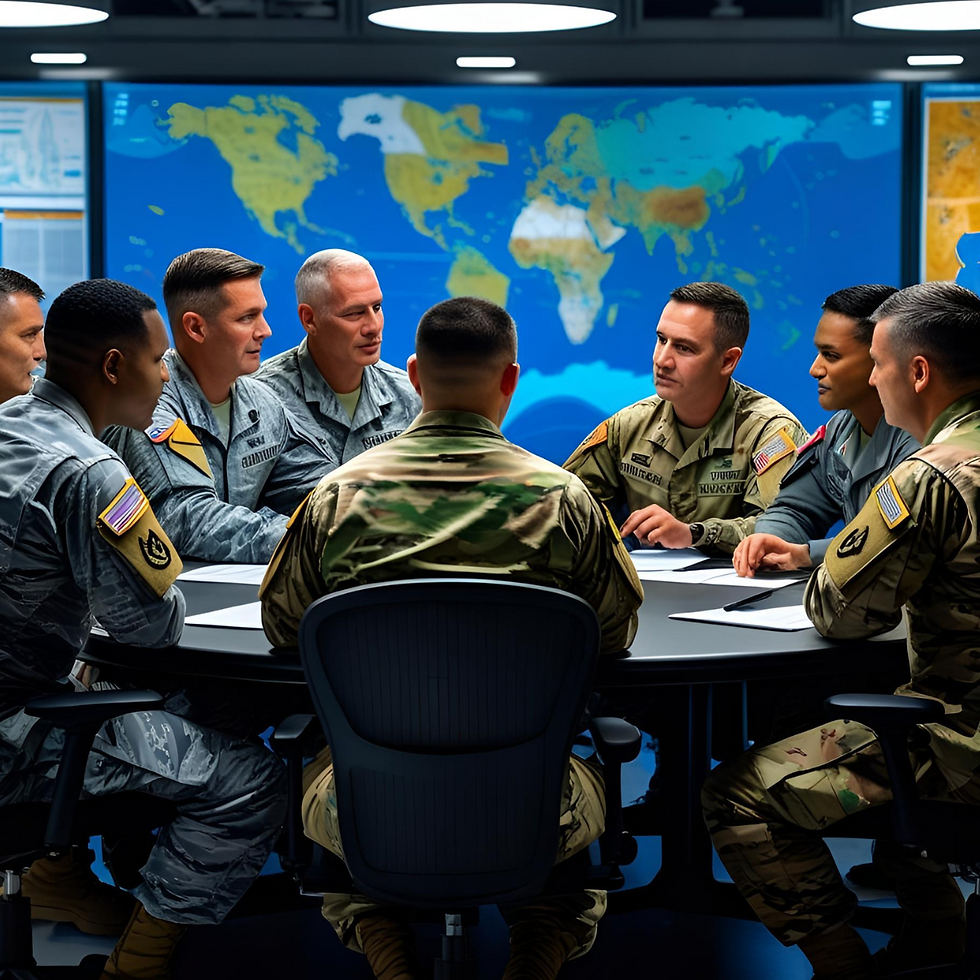When the War Comes Home: Shedding Light on PTSD in Veterans
- taylor crawford
- May 20
- 3 min read
Updated: May 20

Post-Traumatic Stress Disorder (PTSD) is a serious mental health condition that can develop after experiencing or witnessing a traumatic event. While PTSD can affect anyone, military personnel are at a significantly higher risk due to the nature of their service.
Soldiers often face combat situations, life-threatening environments, and the harsh realities of war. These intense experiences can leave lasting psychological scars, often manifesting as PTSD. Symptoms may include flashbacks, nightmares, heightened anxiety, and emotional detachment. Recognizing and addressing PTSD in soldiers is critical—not only for their own well-being but also for the health of their families, communities, and society as a whole. This article explores the causes, prevalence, symptoms, and treatment options for PTSD among military personnel, aiming to raise awareness and offer hope to those affected.
The Prevalence of PTSD in Soldiers
PTSD is a widespread issue among veterans. Studies estimate that 15 to 29% of veterans from recent military operations, such as those in Iraq and Afghanistan, experience PTSD each year. This represents a significant portion of those who have served. The true scope of PTSD among soldiers may be even greater, as stigma, fear, and a lack of access to mental health services can prevent many from seeking help. Underreporting remains a significant barrier, but ongoing efforts aim to improve awareness, support systems, and access to treatment.
Recognizing PTSD Symptoms in Veterans
Early detection of PTSD is crucial for timely intervention and effective recovery. Veterans may exhibit a wide range of symptoms, often affecting their daily lives and relationships.
Common signs of PTSD in veterans include:
Intrusive thoughts, flashbacks, or memories of traumatic events
Nightmares and sleep disturbances
Heightened anxiety, irritability, or hyper-vigilance
Emotional numbness or withdrawal from loved ones
These symptoms can disrupt personal, social, and professional life, making it harder for veterans to reintegrate into civilian life. Recognizing these signs is the first step toward healing. Click here to learn more about PTSD levels, symptoms, and stages.
Why Soldiers Develop PTSD
Combat exposure is one of the leading causes of PTSD in military personnel. Witnessing violence, losing comrades, or surviving life-threatening situations can be deeply traumatic.
The constant stress and pressure of military life, especially during deployment, can wear down a soldier’s emotional resilience over time. Many service members carry the weight of these experiences long after they return home, reliving the trauma in vivid detail.
The Ripple Effect: PTSD’s Impact on Families
PTSD doesn't affect only the individual—it affects everyone around them. Families of soldiers with PTSD often face emotional strain, confusion, and helplessness. Marriages may suffer due to communication breakdowns, mood swings, and emotional distancing. Children may feel neglected or anxious, especially if they don't understand what their parents are going through. These challenges can strain family dynamics and lead to long-term emotional consequences.
Treatment and Support: A Path to Recovery
The good news is that PTSD is treatable. Many evidence-based therapies and support systems are available to help soldiers manage and overcome their symptoms.
Common treatment options include:
Cognitive Behavioral Therapy (CBT): Helps veterans reframe negative thoughts and develop healthier coping mechanisms.
Eye Movement Desensitization and Reprocessing (EMDR): Assists in processing and desensitizing traumatic memories.
Medication: Antidepressants and anti-anxiety medications can help manage symptoms.
Peer Support Groups: Provide a sense of connection and shared understanding.
Alternative Therapies: Yoga, meditation, and mindfulness can promote emotional regulation and stress relief.
With proper support, veterans can regain control of their lives, rebuild relationships, and find peace.
How Communities Can Support Veterans with PTSD
Helping veterans cope with PTSD is a shared responsibility. Families, friends, employers, and communities all play essential roles in creating a supportive environment.
Encourage open conversations, show patience and empathy, and educate yourself about PTSD. Even small gestures—like checking in regularly or attending support events—can make a meaningful difference.
Conclusion: Moving Forward Together
PTSD in soldiers is a complex, ongoing challenge—but it is one we can address with compassion, awareness, and action. By working together—healthcare providers, families, communities, and policymakers—we can ensure veterans receive the care and respect they deserve. Raising awareness is the first step. Supporting recovery is the next step. Let’s stand by those who have served and help them find healing.




Comments